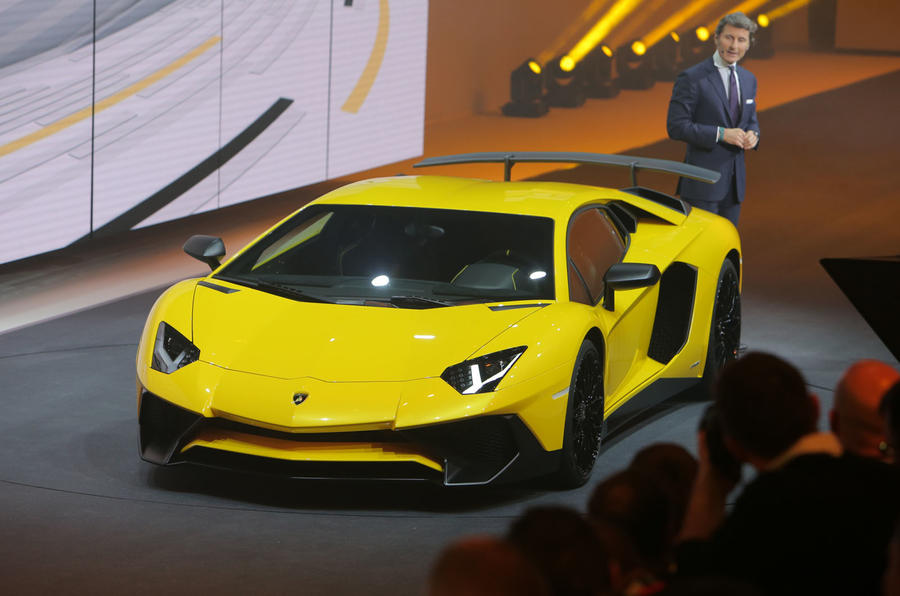The Lamborghini Aventador Superveloce made its global debut at the Geneva motor show earlier this year, and made its dynamic debut at the Goodwood Festival of Speed earlier this summer.
Lamborghini Aventador LP750-4 Superveloce driven
A more powerful and lighter version of the regular Lamborghini Aventador LP700-4, just 600 examples of the £321,743 Superveloce coupé will be made - but it's understood that all the cars have already been sold. A Roadster variant is due to join the range at the Pebble Beach concours in August.
On its reveal at the Geneva show, the Aventador LP750-4 SV coupé was described by the company as the “most pure incarnation of a Lamborghini to date”. It features a more extreme look, an overhauled chassis, a high-revving naturally aspirated V12 engine and an extensive use of carbonfibre to reduce the weight by 50kg over the standard 1575kg Aventador LP700-4 coupé on which it is based.
At the heart of the Aventador SV is a mighty 6.5-litre V12 that now produces 740bhp at 8400rpm, a sizeable increase on the 691bhp the engine produces in the standard Aventador. The increases are down to optimised variable valve timing and variable intake systems. Torque remains the same (507lb ft at 5500rpm) but the engine now revs all the way to 8500rpm.
This increase in power, together with the lighter weight and an improved aerodynamics package, results in a 0-62mph that’s cut from 2.9sec to 2.8sec from the standard Aventador, and a top speed of “more than 217mph”. The power-to-weight ratio is rated at 485bhp per tonne.
The seven-speed automated manual gearbox comes to the SV from the standard Aventador. The exhaust system is newly engineered and Lamborghini says it creates a wide variety of “music”. It features four central tips at the rear of the car.
The Haldex permanent four-wheel drive system remains on the car distributing torque front and rear. There is a self-locking differential on the rear axle and an electronic differential lock on the front axle, which links in with the ESP system.
A Drive Select system with three modes (Strada, Sport and Corsa) is offered. This alters the engine, transmission and differential responses, and the handling and steering characteristics.
Weight has been saved by using carbonfibre for parts including the engine bay cover, rear wing, wing panels, interior door panels, bucket sports seats and air intakes. Carpets and certain noise insulation are also taken out, while the multimedia system is a no-cost option, the maximum weight saving being achieved by doing without it.








































































Join the debate
Add your comment
Wow!! just Wow!!!
I'd rather have a Murcielago
.
Leslie Brook wrote:How come
The interweb works in mysterious ways.